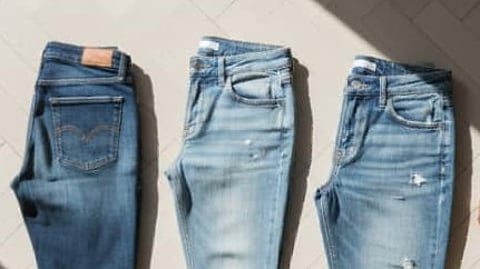

Denim jeans have become an integral part of modern wardrobes across India, symbolizing style, comfort, and versatility. However, beneath their fashionable appeal lies a significant environmental footprint. Understanding the lifecycle of a single pair of jeans—from cotton cultivation to dyeing and finishing—can empower consumers to make eco-conscious decisions and support sustainable fashion.
The Cotton Conundrum: Water and Land Use
Cotton farming is the foundation of denim production. India is one of the largest cotton producers globally, but conventional cotton cultivation is notoriously water-intensive. It takes approximately 7,500 litres of water to grow enough cotton for just one pair of jeans. This water usage strains local water resources, especially in drought-prone areas like Maharashtra and Gujarat.
Moreover, conventional cotton farming relies heavily on synthetic pesticides and fertilizers, which can degrade soil health and pollute nearby water bodies. These chemicals also impact farmers’ health and biodiversity.
Chemical Dyeing: The Hidden Pollutants
After cotton is harvested and spun into yarn, the denim fabric undergoes dyeing and finishing processes. Traditional indigo dyeing uses synthetic dyes containing heavy metals and toxic chemicals. In many textile clusters in India, untreated wastewater from dyeing units is discharged into rivers, harming aquatic life and affecting communities downstream.
The finishing processes, including stone washing and bleaching, further consume water and energy while releasing pollutants. These environmental impacts raise serious concerns about the sustainability of conventional denim manufacturing.
Sustainable Denim: Innovations and Alternatives
Fortunately, sustainable denim options are emerging in India and globally. Organic cotton, grown without synthetic pesticides and fertilizers, reduces environmental and health risks. It is often rain-fed, thus using substantially less irrigation water.
Natural indigo dyes derived from plants offer a less toxic alternative to synthetic dyes. Some manufacturers employ waterless or low-water dyeing technologies, significantly reducing freshwater use.
Brands committed to sustainability are also adopting recycling and upcycling methods. For example, using recycled cotton or blending fibers to reduce dependence on virgin cotton.
Practical Tips for Sustainable Denim Choices in India
- Choose organic cotton jeans: Look for certifications like GOTS (Global Organic Textile Standard), which ensure environmentally friendly farming and processing.
- Support handloom and artisanal denim: Some Indian brands and weavers produce denim blends with traditional techniques, reducing chemical use and promoting local craftsmanship.
- Wash jeans less frequently and with cold water: This conserves water and extends the garment’s life.
- Buy from sustainable brands: Brands like Nicobar and some independent labels focus on eco-conscious production and can be explored for sustainable denim.
- Recycle or donate old jeans: Extending the life cycle reduces waste in landfills.
Use-Case: Choosing Sustainable Denim for Everyday Wear
Consider purchasing a pair of organic cotton jeans from a sustainable brand for your daily commute and casual outings. Their eco-friendly production means you’re reducing water and chemical use, while the durable fabric supports long-term wear. Pair these jeans with natural fiber tops or handwoven accessories to enhance your environmentally mindful wardrobe.
Conclusion
Denim jeans, while fashionable and functional, carry hidden environmental costs, particularly in water consumption and chemical pollution. By understanding these impacts and opting for sustainable alternatives, Indian consumers can support healthier ecosystems and communities. Making informed choices — such as buying organic, supporting artisanal denim, and practicing mindful garment care — can turn everyday fashion into an act of sustainability.
